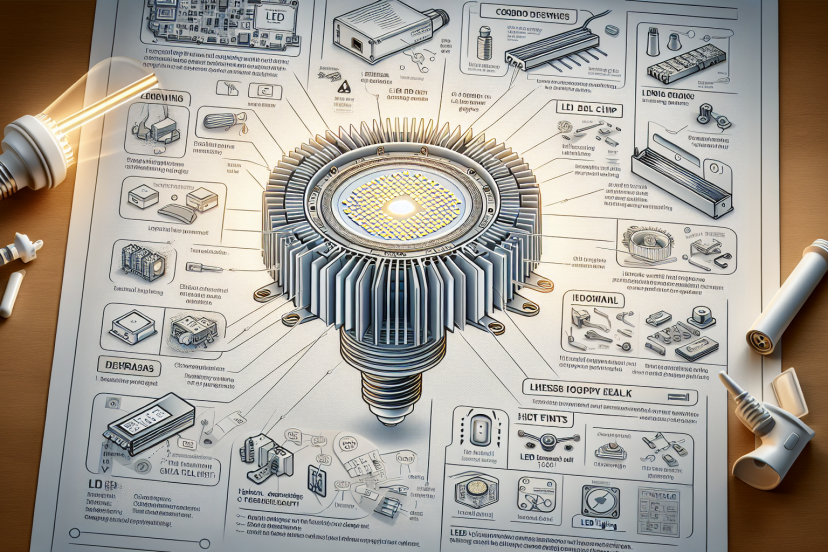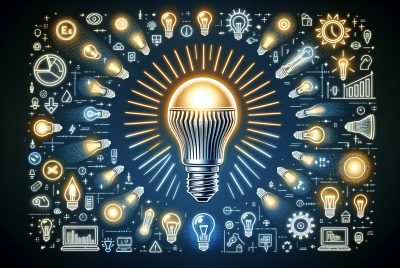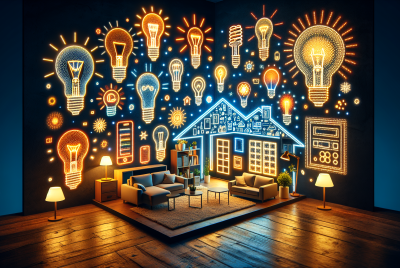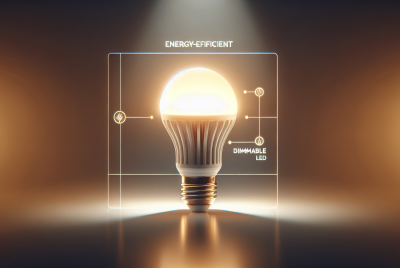How To Properly Maintain Your LED Lighting Fixtures
Maintaining your LED lighting fixtures is crucial to ensuring their longevity and optimal performance. By following some simple maintenance practices, you can not only extend the lifespan of your LED lights but also enhance their energy efficiency. Regularly cleaning the fixtures, checking for loose connections, and replacing any faulty components are just a few steps you can take to keep your LED lighting in top shape. In this article, we will guide you through the process of properly maintaining your LED lighting fixtures, so you can enjoy bright and efficient illumination for years to come.
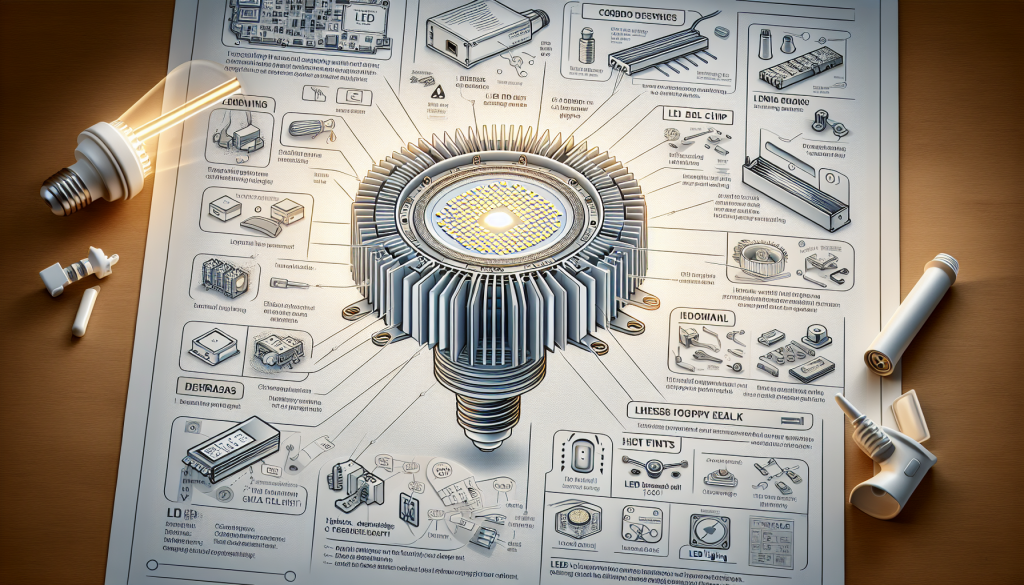
Cleaning LED Lighting Fixtures
LED lighting fixtures can accumulate dust and dirt over time, which can not only affect their appearance but also their performance. To keep your fixtures looking and functioning their best, it’s important to dust them regularly. Simply take a soft cloth and gently wipe away any dust or debris that has accumulated on the surfaces of the fixtures. Avoid using harsh cleaners or abrasive materials, as these can scratch or damage the fixtures. By regularly cleaning your LED lighting fixtures, you can ensure that they continue to provide bright and efficient lighting for years to come.
Preventing Heat Buildup
One of the key factors that can affect the lifespan of LED lighting fixtures is heat buildup. LED lights generate heat as they operate, and if this heat is not properly managed, it can lead to decreased performance and premature failure. It’s important to monitor the ventilation around your LED fixtures to ensure that they have adequate airflow to dissipate heat. Avoid overcrowding the fixtures, as this can impede airflow and contribute to heat buildup. Additionally, consider using heat dissipating materials, such as aluminum heatsinks or thermal pads, to help regulate the temperature of the fixtures and prevent heat-related issues.
Inspecting for Damage
Regularly inspecting your LED lighting fixtures for damage is essential for their proper maintenance. Look for any cracked or broken parts, as these can not only affect the fixture’s appearance but also its functionality. Check for loose connections, as loose wiring can lead to flickering lights or intermittent operation. Ensure that the fixtures are properly sealed, as exposure to moisture or dust can cause damage over time. By regularly inspecting your LED lighting fixtures, you can identify and address any issues before they become major problems.
Replacing Faulty Components
If you notice that your LED lighting fixtures are not performing as they should, it may be necessary to replace faulty components. The first step in this process is identifying which LEDs are faulty. This can be done by visually inspecting the fixture and looking for any LEDs that are not lighting up or are flickering. Once you’ve identified the faulty LEDs, you can test the diodes and drivers using a multimeter or a specialized LED tester. If the diodes or drivers are found to be faulty, they should be replaced. In some cases, it may be more practical to replace the entire LED module if multiple LEDs are faulty or if the module is old and nearing the end of its lifespan.
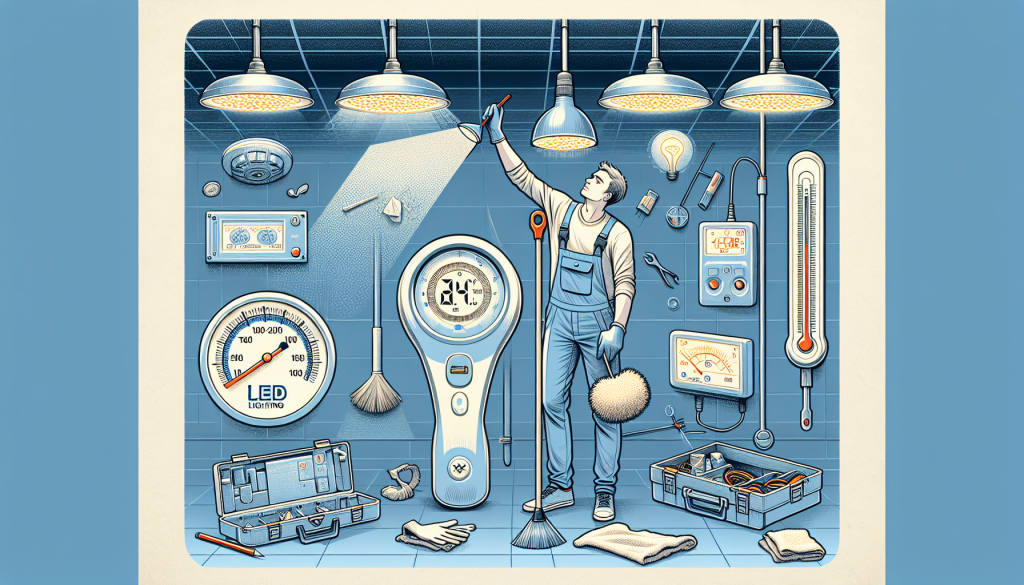
Maintaining Outdoor LED Fixtures
Outdoor LED lighting fixtures require additional maintenance compared to their indoor counterparts due to exposure to the elements. Regularly cleaning the exterior of your outdoor LED fixtures is important to remove dirt, pollen, and other debris that can accumulate on the surfaces. Inspect the fixtures for any signs of water damage, such as rust or corrosion, and address any issues promptly to prevent further damage. Protect your outdoor LED fixtures from extreme weather conditions, such as heavy rain, snow, or high winds, by ensuring they are properly installed and using weatherproof enclosures if necessary. By maintaining your outdoor LED fixtures, you can ensure they remain in good condition and continue to provide reliable lighting.
Proper Handling and Storage
When handling LED lighting fixtures, it’s important to take certain precautions to avoid damaging the components. Avoid touching the LED components directly with your fingers, as the oils from your skin can degrade the performance of the LEDs. Instead, handle the fixtures by their housings or use gloves if necessary. It’s also recommended to use anti-static measures when handling LEDs to prevent damage from static electricity. When storing LED fixtures, choose cool, dry places to protect them from moisture and humidity, as these can cause corrosion or other damage over time. By practicing proper handling and storage techniques, you can ensure the longevity and performance of your LED lighting fixtures.
Extending LED Lifespan
LED lighting fixtures are known for their long lifespan, but there are steps you can take to further extend their longevity. One important measure is to use surge protectors to protect the fixtures from voltage spikes and power surges, which can damage the components. Adjusting the dimming levels of your LED fixtures can also help prolong their lifespan, as excessive dimming or overdriving can put stress on the LEDs. Finally, controlling ambient temperatures around the fixtures can contribute to their longevity. High temperatures can accelerate LED degradation, so ensuring proper ventilation and avoiding excessive heat is key. By implementing these strategies, you can maximize the lifespan of your LED lighting fixtures and minimize the need for frequent replacements.
Scheduling Routine Maintenance
To keep your LED lighting fixtures in optimal condition, it’s essential to create a maintenance schedule and stick to it. Regularly inspect and clean your fixtures according to the schedule, taking into account factors such as the environment, usage patterns, and manufacturer recommendations. Keeping records of services performed, including any repairs or component replacements, can help track the history and condition of the fixtures. Paying attention to the manufacturer’s recommendations for maintenance and upkeep is also important, as they can provide valuable insights specific to your LED fixtures. By adhering to a routine maintenance schedule, you can ensure the ongoing performance and longevity of your LED lighting fixtures.
Troubleshooting Common Issues
Even with proper maintenance, LED lighting fixtures can encounter common issues. Flickering LEDs are a common problem and can be caused by issues such as loose connections, faulty wiring, or incompatible dimmers. Uneven light distribution can occur if the LEDs are not properly positioned or if there are obstructions blocking the light. Color inconsistencies, such as variations in color temperature or color rendering, can be attributed to factors like LED degradation or differences in manufacturing batches. If you encounter any of these issues, it’s important to troubleshoot and address them promptly to maintain the optimal performance and aesthetics of your LED lighting fixtures.
Consulting a Professional
While routine maintenance and troubleshooting can be done by yourself, there may be times when it’s necessary to seek professional advice or assistance. If you have complex LED lighting systems or if you’re unsure about how to perform certain maintenance tasks, it’s best to consult an expert. Professional technicians have the knowledge and experience to diagnose and address issues accurately and efficiently. Additionally, if your LED lighting fixtures are still under warranty, contacting the manufacturer or authorized service centers is recommended to ensure that any repairs or replacements are covered. By consulting professionals when needed, you can confidently maintain and care for your LED lighting fixtures.
In conclusion, properly maintaining your LED lighting fixtures is essential to ensure their optimal performance and longevity. By regularly dusting and cleaning the fixtures, monitoring ventilation, inspecting for damage, and replacing faulty components, you can keep your LED lighting fixtures in excellent condition. Additionally, taking steps to maintain outdoor fixtures, handling and storing the fixtures properly, and implementing strategies to extend their lifespan are all important aspects of LED fixture maintenance. Creating a maintenance schedule, troubleshooting common issues, and consulting professionals when necessary complete the comprehensive approach to maintaining your LED lighting fixtures. With proper care and attention, your LED lighting fixtures will continue to illuminate your spaces efficiently and effectively for years to come.

